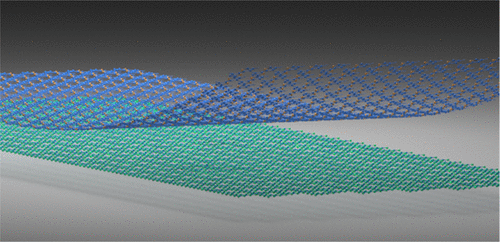当前位置:
X-MOL 学术
›
ACS Appl. Nano Mater.
›
论文详情
Our official English website, www.x-mol.net, welcomes your feedback! (Note: you will need to create a separate account there.)
Graphitic Carbon Nitride/Poly(3-hexylthiophene) Nanocomposites for the Photoelectrochemical Detection of H2O2 in Living Cells
ACS Applied Nano Materials ( IF 5.9 ) Pub Date : 2020-09-08 , DOI: 10.1021/acsanm.0c02114 Yue Wang 1 , Yuxiao Cheng 2 , Nan Wu 3 , Zhonghai Zhang 1
ACS Applied Nano Materials ( IF 5.9 ) Pub Date : 2020-09-08 , DOI: 10.1021/acsanm.0c02114 Yue Wang 1 , Yuxiao Cheng 2 , Nan Wu 3 , Zhonghai Zhang 1
Affiliation

|
Herein, a metal-free photoelectrochemical (PEC) cathodic biosensor based on a composite material of graphitic carbon nitride (g-C3N4) and a conjugated polymer of poly(3-hexylthiophene) (P3HT) is proposed. The formation of a p–n heterojunction between g-C3N4 and P3HT through π–π stacking induced a high degree of molecular ordering, efficient charge separation, and a significantly enhanced PEC performance. The g-C3N4/P3HT PEC cathodic sensor implements sensitive and selective detection of hydrogen peroxide secreted from living cells in a wide linear range from 1.0 to 800 μM with a limit of detection of 0.38 μM. We believed that the metal-free PEC cathodic detection strategy opens up an excellent biodetection approach with high biocompatibility.
中文翻译:

石墨化氮化碳/聚(3-己基噻吩)纳米复合材料用于光电化学检测活细胞中的H 2 O 2
在此,提出了基于石墨氮化碳(gC 3 N 4)与聚(3-己基噻吩)(P3HT)的共轭聚合物的复合材料的无金属光电化学(PEC)阴极生物传感器。通过π-π堆积在gC 3 N 4和P3HT之间形成ap-n异质结,导致高度的分子有序性,有效的电荷分离和显着增强的PEC性能。gC 3 N 4/ P3HT PEC阴极传感器可在1.0至800μM的宽线性范围内进行灵敏且选择性的检测活细胞分泌的过氧化氢,检测极限为0.38μM。我们相信,无金属的PEC阴极检测策略开辟了一种具有高生物相容性的出色生物检测方法。
更新日期:2020-09-25
中文翻译:

石墨化氮化碳/聚(3-己基噻吩)纳米复合材料用于光电化学检测活细胞中的H 2 O 2
在此,提出了基于石墨氮化碳(gC 3 N 4)与聚(3-己基噻吩)(P3HT)的共轭聚合物的复合材料的无金属光电化学(PEC)阴极生物传感器。通过π-π堆积在gC 3 N 4和P3HT之间形成ap-n异质结,导致高度的分子有序性,有效的电荷分离和显着增强的PEC性能。gC 3 N 4/ P3HT PEC阴极传感器可在1.0至800μM的宽线性范围内进行灵敏且选择性的检测活细胞分泌的过氧化氢,检测极限为0.38μM。我们相信,无金属的PEC阴极检测策略开辟了一种具有高生物相容性的出色生物检测方法。


























 京公网安备 11010802027423号
京公网安备 11010802027423号